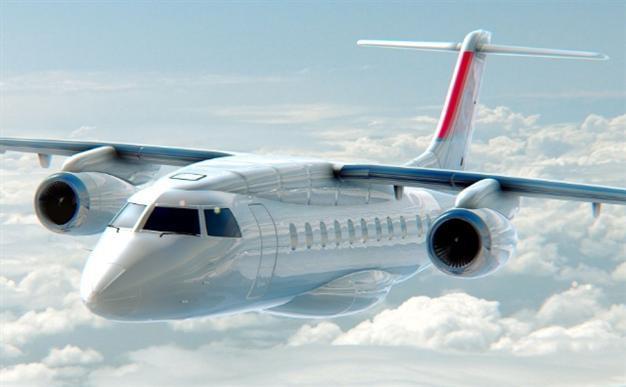Emerging Turkish jet to create up to 4,000 jobs
Burak Bekdil
 The TRJet program that plans to build Turkey’s first indigenous regional jet will eventually create up to 4,000 qualified, high value jobs in aviation industry.
The TRJet program that plans to build Turkey’s first indigenous regional jet will eventually create up to 4,000 qualified, high value jobs in aviation industry.The dual-use (civilian and military) regional jet program, dubbed TRJet, itself will employ over 500 people but company officials say the job plan will also have a five to seven multiplier effect in the aviation industry, thus creating up to 4,000 jobs.
“This is a prestige program for Turkey,” said Cem Uğur, general manager of Esen System Integration, the Turkish affiliate of the U.S.-based Sierra Nevada Corp. (SNC), a partner in the regional jet program.
In June, Turkey announced plans to design, develop and produce its indigenous Turkish regional jet, a first time in the country’s history. But aviation experts and defense industry have since questioned the first Turkish jet’s “Turkishness.”
They expressed concern that the Turkish “production” plants might work more like an assembly line, with most critical parts imported from foreign manufacturers.
“We don’t want to invent the wheel. We don’t want to spend years and billions of dollars to build an aircraft.
Leveraging an existing baseline to save money and time, leveraging an EU-based company for certification and generating revenue as soon as possible are at the heart of the plan,” said Uğur.
Under the plan, SNC and Ankara-based defense technologies firm STM created TRJet, a joint venture company that will build the Turkish regional jet. The indigenous Turkish jet will come in four variants: a TRJ-328 jet and TR-328 turboprop, each with 32 seats, and a TRJ-628 jet and TR-628 turboprop, each with 60 to 70 seats. The TRJ328 and the TRJ628 will be based on Dornier 328 and Dornier 628, respectively.
Uğur said, “The 328 is a stepping stone to build the 628 in the shortest and smallest amount of period and budget. The 328 is not the goal, it is a risk reduction step for the ultimate goal of designing, building and certifying the 628 in Turkey.”
To proceed with the program, Turkey purchased the intellectual property rights for the Dornier jets. It also said it placed an initial order for a batch of 50 TRJ platforms.
“People have, unfortunately, concentrated too much on the 328 and the German and U.S. roles in the program … which caused some misinterpretation,” Uğur said. “Once clearly communicated, we believe we will win support from all political parties. This is a solid program, good for Turkey’s economy.”
Some aerospace industry sources criticized the government for using the regional jet program in its pre-election campaign for propaganda purposes, deliberately twisting the truth to say the end product would be a 100 percent Turkish jet.
“Both [the 328 and 628] will be Turkish aircraft. Their designs will be owned by Turkey. There is a misunderstanding that this means all parts will be manufactured in Turkey,” said Uğur. “Look at [Brazilian aircraft maker] Embraer. Seventy percent of the aircraft is built in the U.S. Dornier 328 comes with 51 percent from the U.S. and the rest from the EU. We aim at maximum content from Turkish suppliers.”
Prime Minister Ahmet Davutoğlu has said that the regional jet and an indigenous fighter would be in the air by 2023 — the country’s centenary. Under the regional jet program, STM will coordinate all subsystem production work.
Designated local subcontractors are Tusaş Turkish Aerospace Industries, Tusaş Turkish Engine Industries, military electronics specialist Aselsan, military software specialist Havelsan, private aviation companies Alp Havacılık and Kale Havacılık, and THY Teknik, the maintenance and repairs subsidiary of Turkey’s national carrier, Turkish Airlines.
Defense procurement officials say the TRJet program, once proven, would attract significant demand for different military missions.
“This will be a long-term program suitable to create its own [military] applications in every direction the operational demand points to,” said one official.
















